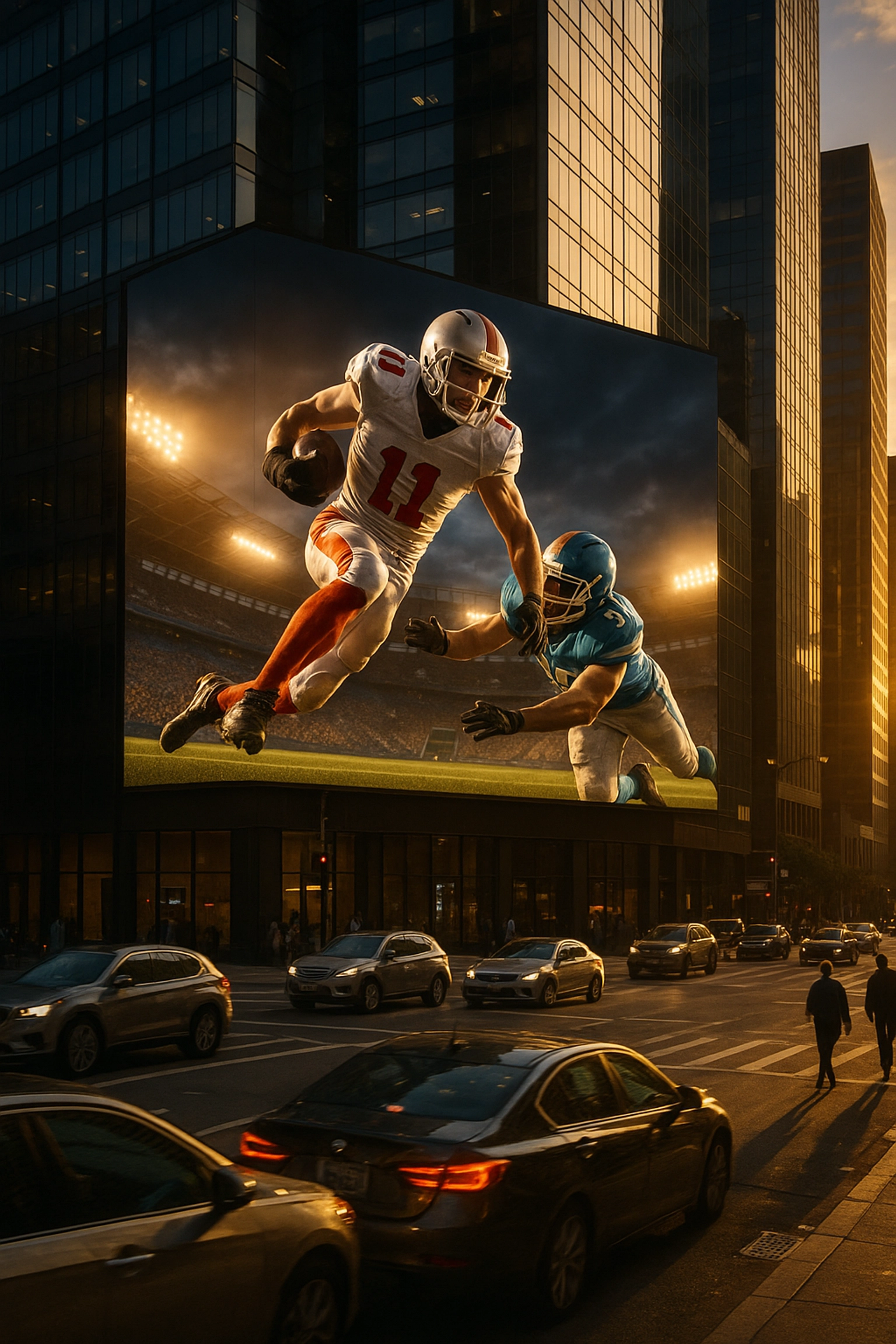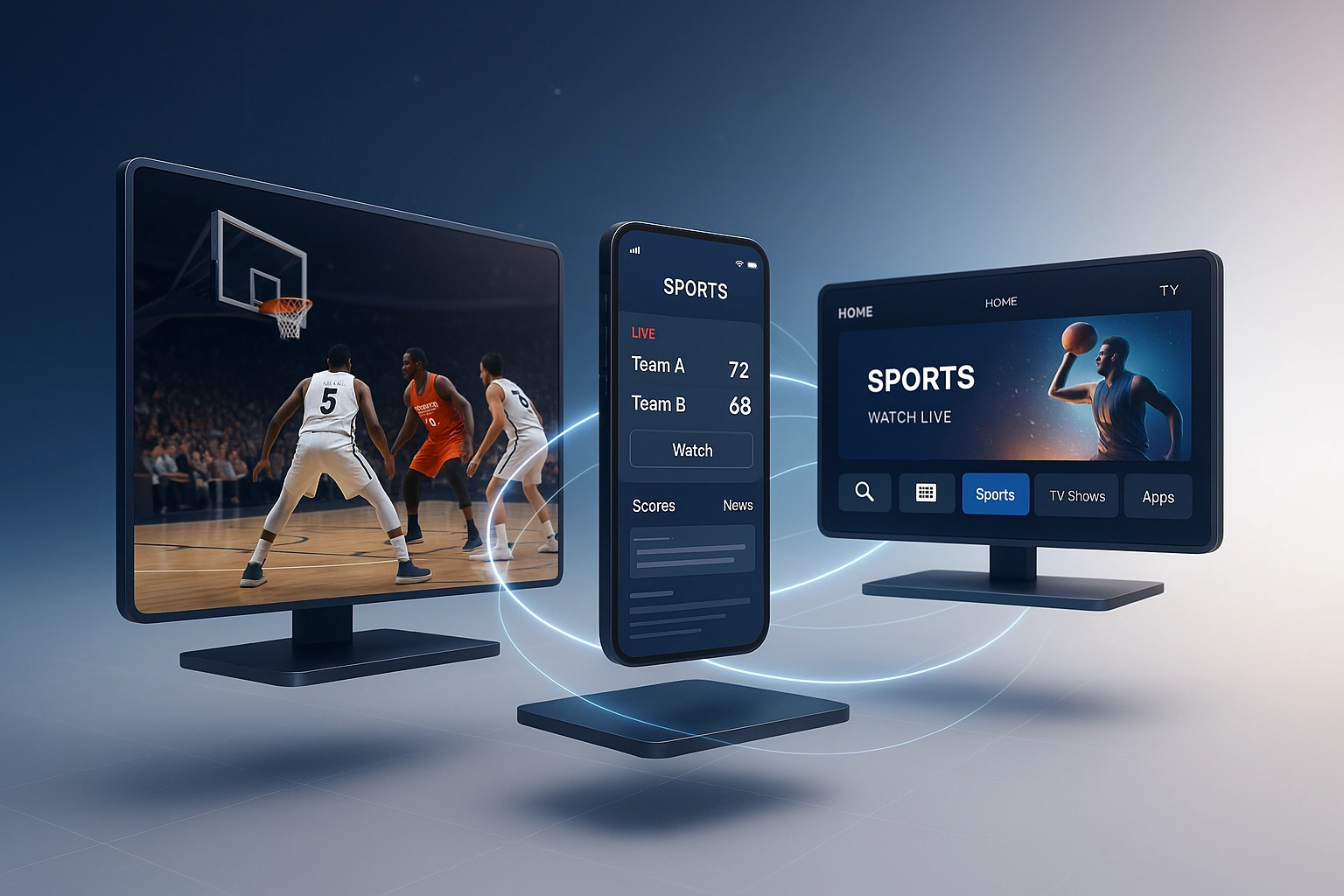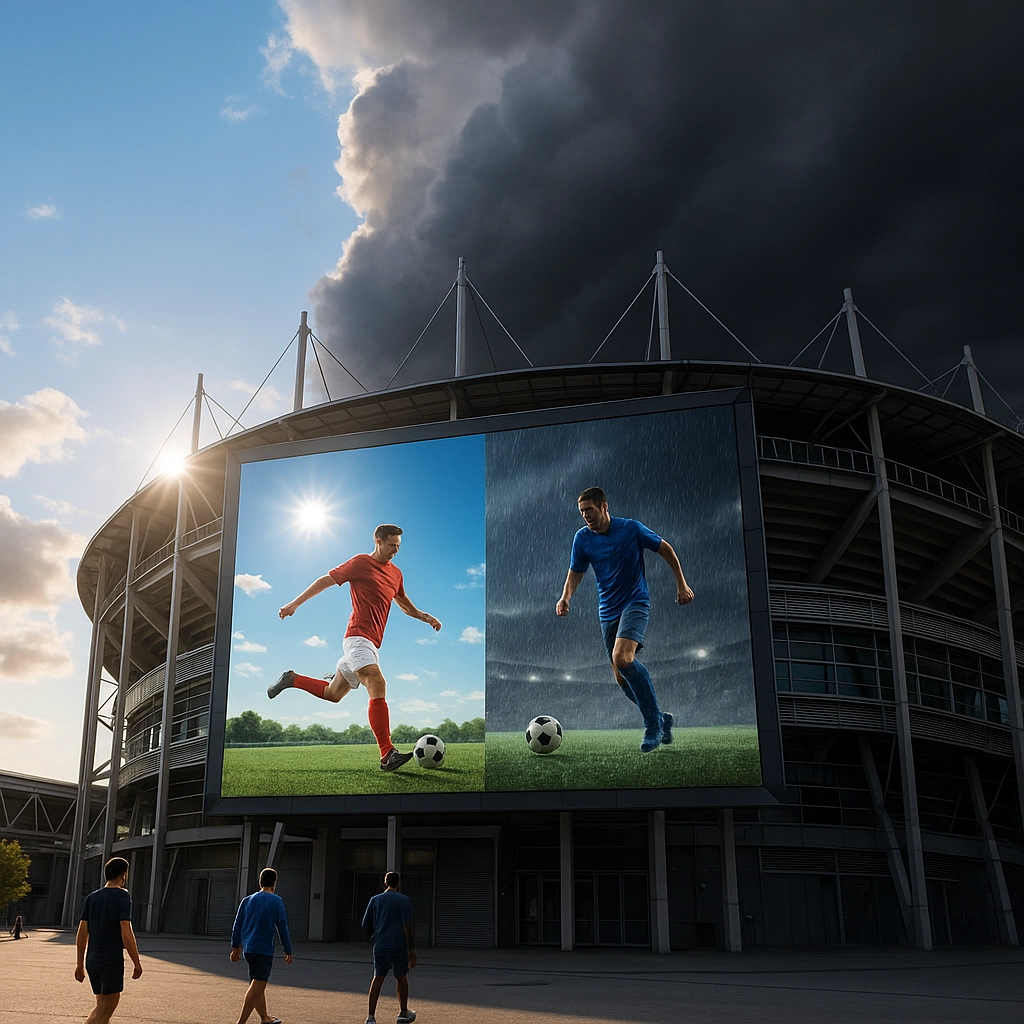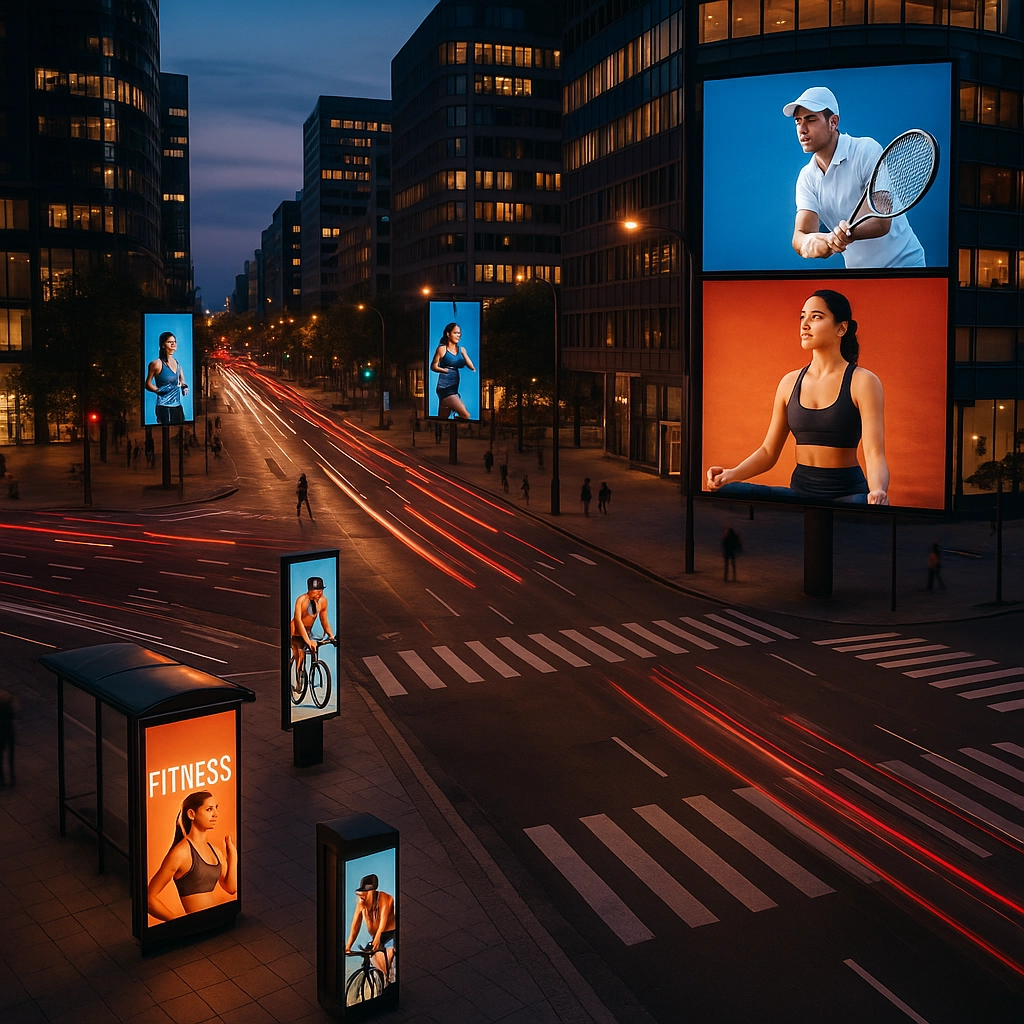Share this post: LinkedIn | Facebook | Instagram | X
The digital out-of-home (DOOH) advertising market reached $18.8 billion in 2022 and projects to exceed $58 billion by 2030, representing unprecedented growth opportunities for sports marketers. While this figure encompasses the broader DOOH landscape, programmatic DOOH specifically demonstrates even more explosive expansion, growing from $916.2 million in 2023 to an anticipated $6.1 billion by 2030 at a remarkable 31.5% compound annual growth rate.
Sports campaigns within this programmatic ecosystem present unique advantages through real-time targeting capabilities, dynamic creative optimization, and audience-specific messaging that traditional advertising channels cannot match. Dan Kost, CEO of OOH Sports, emphasizes that brands leveraging programmatic DOOH strategies position themselves to capture significant market share during this period of rapid digital transformation.
Understanding Programmatic DOOH's Competitive Advantage
Programmatic DOOH utilizes automated technology to deliver targeted content across digital billboards, transit displays, and outdoor screens based on real-time data and audience insights. This automation streamlines buying and selling processes while enhancing advertisement relevance through demographic targeting, time-of-day optimization, weather responsiveness, and real-time event integration.

The technology's adaptability allows brands to fine-tune messages instantaneously, aligning with specific audience segments and varying contextual factors. This capability produces more personalized advertisements that generate enhanced engagement rates and higher conversion performance compared to static outdoor advertising approaches.
Strategy 1: Dynamic Creative Optimization Through Real-Time Data
Implement creative adjustments that respond automatically to changing environmental conditions and audience segments. Dynamic creative optimization leverages real-time data feeds including weather patterns, traffic conditions, local events, and demographic insights to modify advertisement content instantly.
Sports campaigns benefit significantly from this approach by adjusting messaging based on:
- Live game scores and standings
- Weather conditions affecting outdoor sporting events
- Local team performance and fan sentiment
- Seasonal sports calendar transitions
Brands utilizing dynamic optimization report up to 144% increases in purchase consideration, as demonstrated in successful Sea-Doo campaign implementations.
Strategy 2: Audience-Based Targeting With First-Party Data Integration
Deploy first-party data to segment audiences and deliver tailored messages based on location intelligence and demographic profiles. This strategy combines audience-based planning with premium out-of-home contexts to reach customers across their complete daily journey.
Effective audience targeting utilizes:
- Geographic proximity to sports venues and events
- Historical attendance patterns at sporting events
- Demographic profiles aligned with specific sports preferences
- Purchase behavior data indicating sports-related interests
The integration of first-party data with programmatic DOOH platforms enables precision targeting that traditional outdoor advertising cannot achieve, resulting in more efficient media spend allocation and improved campaign performance metrics.
Strategy 3: Omnichannel Campaign Integration
Position programmatic DOOH as a critical component within comprehensive marketing ecosystems. Out-of-home advertising serves as an essential element for complete omnichannel strategies, as campaigns cannot effectively reach customers throughout their daily activities without outdoor touchpoints.

Successful omnichannel integration includes:
- Consistent messaging across connected TV, mobile, and audio platforms
- Sequential messaging that builds brand narrative across touchpoints
- Cross-platform frequency management to optimize exposure
- Attribution measurement connecting DOOH exposure to online conversions
Studies indicate that DOOH integration makes other marketing channels more performant by providing crucial awareness and consideration-building touchpoints that enhance overall campaign effectiveness.
Strategy 4: Real-Time Performance Optimization and Automated Bidding
Leverage automated bidding systems and performance optimization capabilities to ensure advertisements reach targeted audiences at optimal times. Programmatic platforms enable real-time decision-making based on performance data, allowing instant modifications to bid strategies, targeting parameters, and creative content.
Performance optimization strategies include:
- Automated bid adjustments based on audience availability
- Real-time creative rotation testing for optimal engagement
- Dynamic budget allocation across high-performing inventory
- Immediate campaign pausing or scaling based on performance thresholds
The flexibility of automated optimization allows brands to maximize return on advertising spend while maintaining consistent campaign performance across varying market conditions.
Strategy 5: Contextual Responsiveness Through Environmental Triggers
Deploy campaigns that adapt automatically to environmental factors including weather conditions, time of day, local events, and traffic patterns. Contextual targeting enhances advertisement relevance by delivering messages that align with immediate environmental circumstances.
Sports campaigns particularly benefit from contextual responsiveness through:
- Weather-triggered messaging for outdoor sports activities
- Event-proximity targeting around stadiums and venues
- Time-based messaging aligned with game schedules
- Traffic pattern optimization for maximum exposure during commute periods

This contextual approach increases message relevance and audience receptivity, leading to improved engagement rates and stronger brand recall metrics.
Strategy 6: Cross-Platform Consistency and Message Reinforcement
Ensure programmatic DOOH campaigns maintain consistent messaging across connected TV, mobile platforms, and audio services. Cross-platform consistency reinforces brand messaging and improves brand recall through repeated exposure across multiple touchpoints.
Successful cross-platform strategies incorporate:
- Unified creative concepts adapted for each medium's specifications
- Coordinated timing across platforms for maximum impact
- Consistent brand voice and visual elements
- Sequential messaging that builds narrative progression
Research demonstrates that 76% of American consumers take action after DOOH exposure, with cross-platform reinforcement significantly amplifying this response rate through improved brand recognition and message retention.
Strategy 7: Advanced Technology Integration for Enhanced Engagement
Capitalize on technological improvements including higher resolution displays, video capabilities, interactive features, and real-time dynamic content capabilities. Advanced screen technologies make DOOH advertisements more relevant, engaging, and effective for both advertisers and audiences.
Technology enhancements that drive engagement include:
- 4K and 8K display resolution for premium visual impact
- Interactive touchscreen capabilities for audience engagement
- Motion sensors for proximity-based content triggering
- QR code integration for seamless digital experience connection
These technological advances create opportunities for innovative campaign executions that capture attention and drive measurable audience responses.
Market Growth Drivers and Future Opportunities
The programmatic DOOH market expansion benefits from increasing digitalization of outdoor advertising infrastructure and smart city development with connected devices that enhance real-time data collection capabilities. This technological foundation supports more sophisticated targeting and measurement capabilities that traditional outdoor advertising cannot provide.

Key growth factors include urbanization trends, increased digital infrastructure investment, and growing advertiser demand for measurable outdoor advertising solutions. Sports marketers positioned early in this technology adoption cycle gain competitive advantages through audience insights, targeting precision, and campaign optimization capabilities.
Implementation Considerations
Successful programmatic DOOH campaign execution requires strategic planning across technology platform selection, creative development, measurement framework establishment, and cross-channel integration. Brands should evaluate platform capabilities, audience data quality, inventory availability, and attribution measurement options when developing implementation strategies.
The rapid market growth creates opportunities for brands to establish programmatic DOOH expertise while competition remains relatively limited. Early adoption provides access to premium inventory, platform relationship development, and audience insight generation that becomes increasingly valuable as market competition intensifies.
Sports marketers utilizing these seven real-time strategies position themselves to capture significant shares of the expanding programmatic DOOH market while the technology landscape continues evolving. The combination of market growth, technological advancement, and strategic implementation creates unprecedented opportunities for measurable campaign success.
For expert guidance on implementing programmatic DOOH strategies for sports campaigns, contact OOH Sports at +1 (970) 703-0102 or visit oohsports.com to explore comprehensive campaign development solutions.
Tags: #Motivation #Branding #Strategy #Marketing #AdvertisingAndMarketing #digitalmarketing #Innovation #Sports

